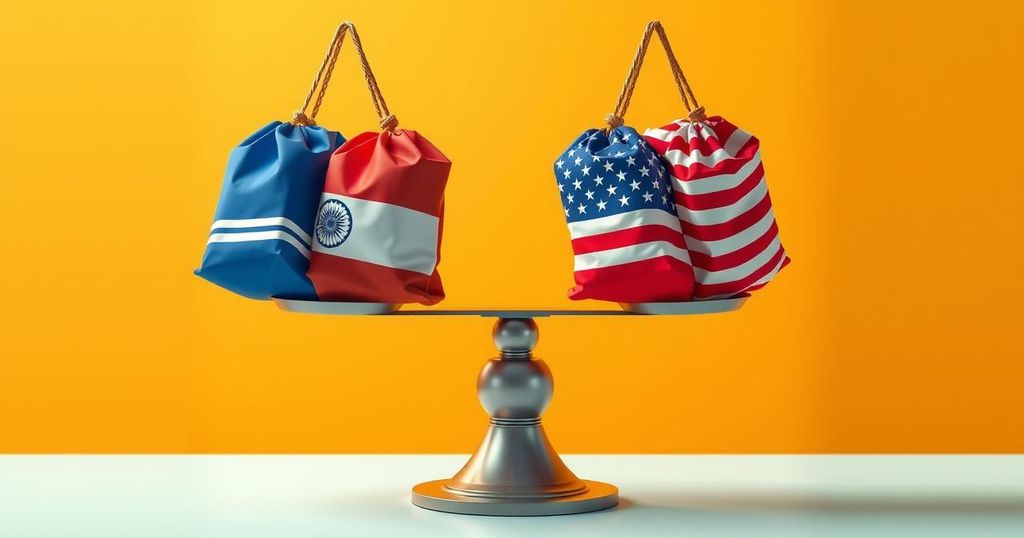Indian Government Evaluates Impact of 26% Tariffs Imposed by U.S.

The Indian government is analyzing the economic consequences of a 26% tariff imposed by the U.S., with the first phase starting on April 5. Officials view the situation as a mixed bag and believe negotiations may help alleviate challenges. President Trump emphasized the need for fair trade practices, announcing April 2 as “Liberation Day.” The Indian-U.S. bilateral trade agreement is under negotiation, targeting a fall conclusion.
The Indian government is currently assessing the economic implications of the 26 percent reciprocal tariff imposed by the United States, as confirmed by a senior official from the commerce ministry. This tariff, part of a broader trade policy by President Donald Trump, targets nations that impose significantly higher duties on U.S. exports. The initial phase of a universal 10 percent tariff is set to commence on April 5, followed by an additional 16 percent on April 10, culminating in a total duty of 26 percent for Indian imports.
The commerce ministry official remarked that the situation is a “mixed bag and not a setback for India,” indicating that there remains an opportunity for negotiation. The administration in Washington has suggested that the duties could be adjusted in favor of nations that address U.S. trade concerns. Currently, India and the United States are engaged in negotiations for a bilateral trade agreement, with aims to finalize the initial phase by autumn this year.
During the announcement of the tariffs, President Trump labeled April 2 as “Liberation Day.” He highlighted that India imposes a 52 percent tariff on American products, framing the U.S. tariff as a “discounted” rate of 26 percent in response. In his remarks regarding the tariffs, Trump stated, “This is Liberation Day, a long-awaited moment. 2nd April 2025 will forever be remembered as the day American industry was reborn…” He also emphasized that India’s trade policies are “very, very tough, ” reflecting his intention to recalibrate trade relations in favor of U.S. interests.
In summary, the Indian government is evaluating the repercussions of the U.S. tariffs, which have been identified as part of a broader trade strategy. While initially perceived as challenging, officials remain optimistic about potential negotiations that could ease the burden. With ongoing discussions for a bilateral agreement aimed for completion by fall, diplomatic efforts may play a crucial role in mitigating adverse impacts of these tariffs. President Trump’s declaration of April 2 as “Liberation Day” underscores the administration’s focus on reforming trade dynamics with India.
Original Source: www.business-standard.com








